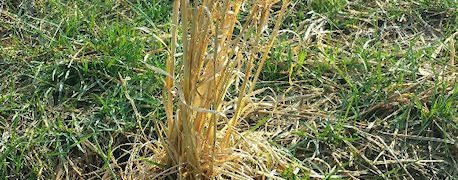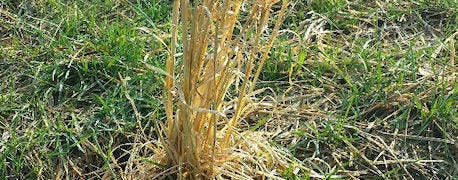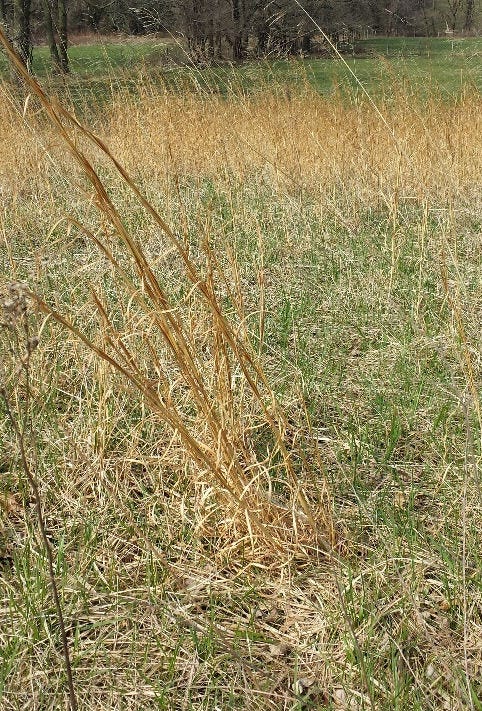
If your hay field or pasture is covered with brown plants a couple feet tall while cool-season grass and clover try to grow underneath, you're not alone.
Victor Shelton, an Indiana state agronomist and grazing specialist with the Natural Resources Conservation Service, says this infestation of the tall, brown plants -- called broomsedge -- happens frequently when producers skip a fertilizer application or two or fail to apply lime on pasture.
Broomsedge is known as poverty grass, Shelton says, because even the cows don't like to eat it. It has so little value that it's not worth their time in consuming it.
Very low phosphorus levels in pastures or hay fields often allow broomsedge to get the upper hand, he says. Thinner, more eroded soils often devoted to grass or hay land are prime suspects. The pH is often lower with low calcium, making conditions favorable for broomsedge development.

Lousy feed: Broomsedge grows well in late season, but it's a lousy feed. Manage it by clipping it now and fertilizing to promote cool-season grasses.
Related: Jumpstart Pasture Grass Growth With Control Burn
If you have it at full height now from last fall, consider clipping it down so it doesn't block sunlight form the new grass growth underneath it. Mow it and then fertilize the pasture or hay field according to soil test results, and you can shift the advantage toward cool-season grasses, Shelton says. The other reason broomsedge does well later in the season is it is a warm-season perennial – just not a grass with no value for feeding.

A better look at broomsedge
"It's all about competition," Shelton says. "If you can manage the field for growth of early-season grasses, the cool season species will compete and crowd out the broomsedge."
Related: Science Finally Measuring Values From Good Grazing Management
Once broomsedge begins to grow back later in the summer, as warmer temperatures favor it, you can graze it back without removing too much of the desired species, he says. This will put pressure and stress on the supporting roots of the poor grass and give more advantage to the desired species that you want in your pasture or hay field.
Don't expect to remove it all in one season. However, if you don't take action it will take over, Shelton concludes.
About the Author(s)
You May Also Like




